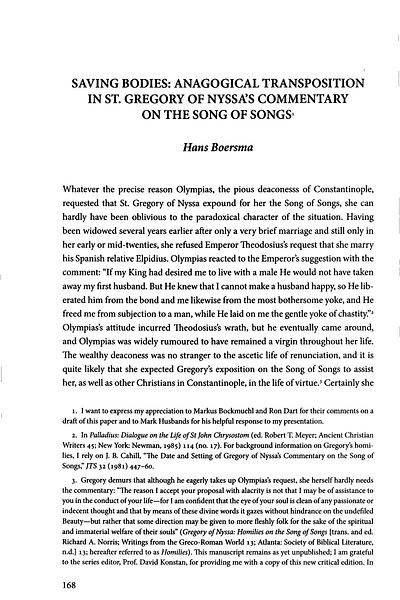Saving Bodies
Anagogical Transposition in St. Gregory of Nyssa’s Commentary on the Song of Songs
Sep 03, 2010
Ex Auditu 26 (2010): 168–200

Saving Bodies: Anagogical Transposition in St. Gregory of Nyssa's Commentary on the Song of Songs
2.65MB ∙ PDF file
In this essay, I will argue that both the transposition of the human body (and the bodily senses) through deification in Christ and the transposition of the textual body from obvious to hidden meaning imply for Gregory an anagogical ascent from the material to the spiritual realm. Furthermore, these two transpositions are closely intertwined. The reader of the Song of Songs is only able to transpose the textual body of Scripture to the extent that his erotic desires are reoriented in Christ, and it is only an allegorical or anagogical interpretation of the Song of Songs that redirects the reader s desires from "brutish, irrational passions" to "incorporeal and spiritual and undefiled marriage with God" by recognizing the significance of this twofold anagogical ascent will we be able to do justice to the saving role of Christ as the new bodily garment and to the church as the body of Christ. This essay is about saving bodies: trying to save the bodily senses and the textual body of Scripture without anagogical transposition renders us unable to recognize sufficiently the saving bodies of Christ (our bodily garment) and of the church (the body of Christ). This seems to be St. Gregory of Nyssa's view, and it is my belief that there is a great deal we can continue to learn from this rather "otherworldly" perspective.
Download


